Start planning your ultimate gorilla trekking safari
Speak with an Africa travel expert

Alistair
Travel Expert
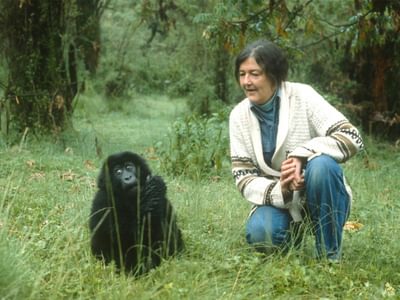
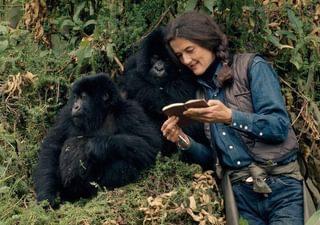
Dian Fossey was an American primatologist famous for her extensive study and research of mountain gorillas from 1966 until her death in 1985. For more than 20 years, she lived among them in the Virunga mountains, at first studying the great apes and then, slowly becoming their friend, protector and some would easily say - Saviour.
It took the entirety of Dian Fossey’s life savings as well as a bank loan to make a lifelong dream of visiting Africa become a reality.
In September 1963, Dian arrived in Kenya. Her journey around Africa included visits to Kenya, Tanzania (then Tanganyika), Congo (then Zaire), and Zimbabwe (then Rhodesia). Her guide and host for this epic adventure was John Alexander, a British hunter. The route he planned included Tsavo, Africa’s largest national park; the saline lake of Manyara, famous for attracting giant flocks of flamingos; and the Ngorongoro Crater, well-known for its abundant wildlife.
The final two regions of her African adventure were to take Dian to the Olduvai Gorge in Tanzania,
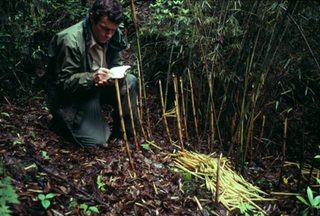
This was the archaeological site of Louis and Mary Leakey. And then to Mt. Mikeno in the Congo, where in 1959 American zoologist Dr. George Schaller carried out a pioneering study of the mountain gorilla. Dr. Schaller was the first person to conduct a reliable field study of the mountain gorillas, and his efforts paved the way for the research that would become Dian Fossey’s life work.
“I believe it was at this time the seed was planted in my head, even if unconsciously, that I would someday return to Africa to study the gorillas of the mountains.” — “Gorillas in the Mist”
Visiting Dr. Louis Leakey at Olduvai Gorge was an experience that proved a pivotal moment in Dian Fossey’s life. During their time together, Dr. Leakey talked to Dian about Jane Goodall’s work with chimpanzees in Tanzania, which at the time was only in its third year. He also shared his belief of the importance of long-term field studies with the great apes.
Dr. Leakey gave Dian permission to have a look around some newly excavated sites while she was at Olduvai Gorge, which holds the earliest evidence of the existence of human ancestors.
Unfortunately, in her excitement, she slipped down a steep slope, falling onto a recently excavated dig, breaking her ankle in the process. This put Dian’s impending climb to see mountain gorillas at risk, but she was not discouraged so easily. Even after her debilitating fall, she was more resolved than ever to get to the gorillas.
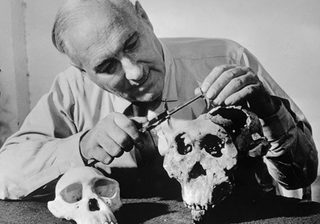
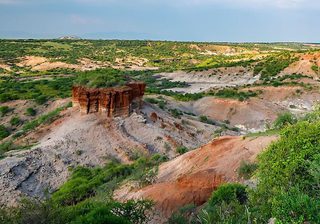
On Oct. 16, Dian visited the Travellers Rest, a small hotel in rural Uganda, close to the Virunga Mountains and the mountain gorillas. The hotel was owned by Walter Baumgartel, an advocate for gorilla conservation and amongst the first pioneers to see the benefits that tourism could bring to the area and preservation of mountain gorillas.
Baumgartel introduced Dian to Joan and Alan Root, two wildlife photographers from Kenya, who were collecting footage of the mountain gorillas for a photographic documentary. The Roots took Dian deep into the forest to search for gorillas and when they eventually came upon a group, something awoke and stirred within her - she developed a firm resolve to return and study these beautiful creatures herself.
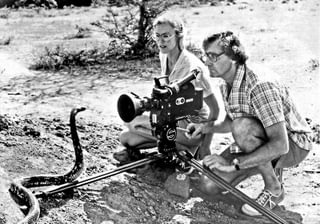
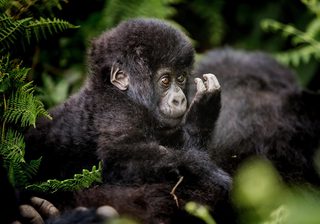
Dian describes this moment in ‘Gorillas in the Mist’:
“It was their individuality combined with the shyness of their behaviour that remained the most captivating impression of this first encounter with the greatest of the great apes. I left Kabara with reluctance but with never a doubt that I would, somehow, return to learn more about the gorillas of the misted mountains.”
After her life-changing visit to the Virungas, Dian continued her journey through Africa a while longer, staying with friends in Rhodesia. Upon arriving home in Kentucky, she resumed her work at Kosair Children’s Hospital, so she could repay the loan she had taken to fund her trip to Africa – all the whilst dreaming of the day she would return to a continent which had captured her heart.
As Dian Fossey continued her life in Kentucky, she wrote and published a number of articles and photographs from her inspirational Africa trip. These would later serve her well when a lecture tour brought Dr. Louis Leakey to Louisville in the Spring of 1966. Dian attended the lecture and waited in line to speak with Leakey afterwards. When her turn came, she showed him some of her published work.
This captured his attention and during the conversation that followed, Leakey spoke to Dian about heading a long-term field project to study the gorillas in Africa. Leakey told Dian that if she really wanted to be involved with the project she would first have to have her appendix removed before spending long periods in the gorillas’ habitat.
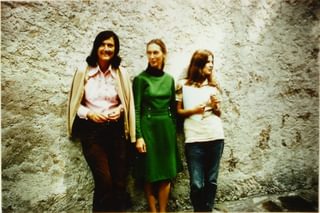
A few weeks after returning home from the hospital without her appendix, Dian received a letter from Leakey saying, “Actually there really isn’t any need for you to have your appendix removed. That is only my way of testing applicants’ determination.” Fossey wrote that “this was her first introduction to Dr. Leakey’s unique sense of humour and his way of gauging her resolve”.
It took several months before Leaky was able to secure funds for the study, which Dian used wisely, paying off her initial trip to Africa and to study. She focused on a “Teach Yourself Swahili” grammar book and George Schaller’s books about his own field studies with the mountain gorillas. Saying goodbye to family, friends, and her beloved dogs proved difficult:
“There was no way that I could explain to dogs, friends, or parents my compelling need to return to Africa to launch a long-term study of the gorillas. Some may call it destiny and others may call it dismaying. I call the sudden turn of events in my life fortuitous.” — “Gorillas in the Mist”
Just over three years after her initial trip, Dian was once again on her way to Africa and after arriving in Kenya, setting off for the Congo in an old canvas-topped Land Rover named ‘Lily’. On the way, Dian made a stop to visit the Gombe Stream Research Centre to meet Jane Goodall to learn and observe her research methods with chimpanzees.
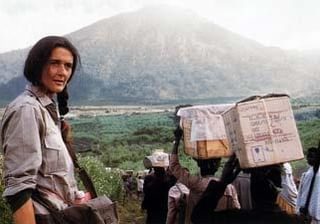
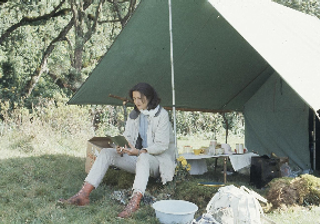
Alan Root accompanied Dian Fossey from Kenya to the Congo and was instrumental in helping her obtain the necessary permits needed to work in the Virungas. He also helped her recruit two local men who would stay and work with her at camp. Root used his knowledge and experience to help set up camp and gave Dian a brief introduction to gorilla tracking. It was only two days after he left Camp Kabara that it struck Dian how isolated she was. Soon, however, tracking the mountain gorillas would become her single focus.
On her first day of trekking, and after only a 10-minutes, Dian was rewarded with the sight of a lone male gorilla sunning himself in a forest clearing. The startled gorilla retreated into the vegetation as she approached, but Dian was encouraged by the encounter. Shortly thereafter, Senwekwe, an experienced gorilla tracker, who had worked with Joan and Alan Root in 1963, joined Dian, and the prospects for more sightings improved.
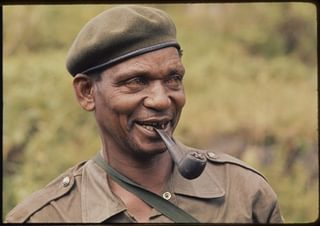
Senwekwe proved invaluable as a tracker and taught Dian much of what she came to know about tracking. With his help and considerable patience, she eventually identified three gorilla groups in her area of study along the slopes of Mt. Mikeno.
“The Kabara groups taught me much regarding gorilla behaviour. From them I learned to accept the animals on their own terms and never to push them beyond the varying levels of tolerance they were willing to give. Any observer is an intruder in the domain of a wild animal and must remember that the rights of that animal supersede human interests.” — “Gorillas in the Mist”
Initially, gorillas would flee into the vegetation as soon as Dian approached. It was by openly observing them from a distance, that over time, she began to gain their acceptance. She put the gorillas at ease by imitating regular activities like scratching, feeding and copying their contentment vocalisations.
Dian began to identify individuals that made up each group and like George Schaller before her, Dian relied heavily on the gorillas’ individual “noseprints” to help identify them. She sketched the gorillas and their noseprints from a distance, slowly becoming more competent in her ability to recognise individuals within the three distinct groups around Kabara, learning about their behaviour and keeping detailed records of daily encounters.
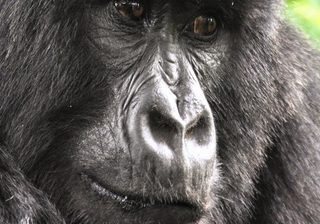
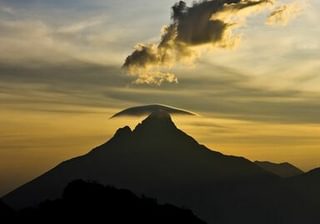
Dian Fossey worked tirelessly, every day carrying a pack weighing over 10kgs until the day she was driven from camp by the worsening political situation in Congo… A rebellion had begun in the Kivu Province of Zaire and on 9th July, 1967, she and Senwekwe returned to camp to find armed soldiers waiting to “escort” her down the mountain to safety.
Dian spent two weeks under military guard in Rumangabo, Zaire until 26th July, she was able to orchestrate her escape. She offered her guards cash if they would take her the 50km to Kisoro in Uganda, so she could register “Lily” properly and then bring her back. The guards could not refuse the financial gain and agreed to provide escort. Once in Kisoro, Dian went straight to the Travellers Rest Hotel, where her friend, Walter Baumgärtel immediately called the Ugandan military. The Zairian soldiers were arrested, and Dian was safe.
In Kisoro, Dian was warned not to return to Zaire and after more questioning in Kigali, the capital of Rwanda, she finally flew back to Nairobi where she met with Dr. Leakey for the first in seven months. There they both decided against the advice from the U.S. Embassy and Dian would continue her work on the Rwandan side of the Virungas.
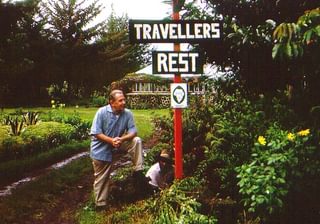
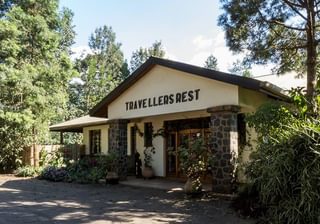
“More than a decade later as I now sit writing these words at camp, the same stretch of alpine meadow is visible from my desk window. The sense of exhilaration I felt when viewing the heartland of the Virungas for the first time from those distant heights is as vivid now as though it had occurred only a short time ago. I have made my home among the mountain gorillas.” — “Gorillas in the Mist”
Dian Fossey is quick to praise those she met along her journey, helping and contributing to the success in the study of mountain gorillas. This would prove evident once again as she moved her focus to Volcanoes National Park on the Rwandan side of the Virungas where she met Rosamond Carr, who had lived in Rwanda for some years and who later introduced Dian to Alyette DeMunck – both ladies were familiar with Rwanda’s culture and people. Alyette and Dian became fast friends with Alyette becoming one of her staunchest supporters in the years to follow.
Alyette offered to help Dian find an appropriate site for her new camp and renewed study of the mountain gorillas of the Virungas. At first, Dian was disappointed to find the slopes of Mt. Karisimbi crowded with herds of cattle and frequent signs of poachers. After nearly two weeks of searching, Dian was rewarded when she reached the alpine meadow of Karisimbi, with a breath-taking view of the entire Virunga chain of extinct volcanoes stretching out before her.
It was the 24th September 1967 that Dian Fossey established the Karisoke Research Center — “Kari” for the first four letters of Mt. Karisimbi that overlooked her camp from the south and “soke” for the last four letters of Mt. Visoke, the slopes of which rose to the north, directly behind camp.
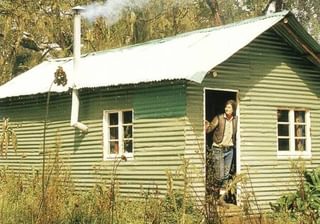
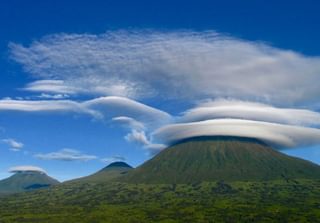
Dian faced numerous challenges while setting up camp at Karisoke, especially after the departure of her friend Alyette. She was left with no interpreter, speaking only Swahili with her Rwandan workers, who were more akin to speaking only Kinyarwanda. Slowly, and with the aid of hand gestures and facial expressions, they learned to communicate.
A second and very significant challenge was that of gaining “acceptance” among the gorillas in the area so that meaningful research could be done in close proximity. This would require the gorillas overcoming their shy nature and instinctive, natural fear of humans.
George Schaller’s earlier work and book; ‘The Mountain Gorilla’ served as the basis for the techniques Dian would employ to help habituate gorillas to her presence and eventually successfully habituating six groups of gorillas in the Kabara region and by 1968, four groups in Karisoke.
Dian used Schaller’s techniques but also depended on the gorillas’ natural curiosity in the habituation process. While walking or standing upright increased their apprehension, she was able to get quite close when she “knuckle-walked.” She would also chew on celery when she was near the groups, to draw them even closer to her.
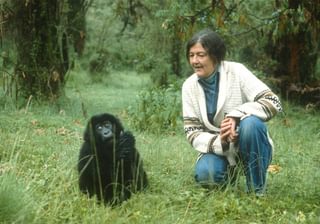
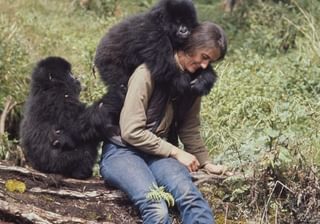
Dian Fossey admitted that she never felt entirely up to the scientific aspects of studying the mountain gorillas because she did not have, in her view, adequate academic qualifications. So, to rectify this, Dian enrolled in the department of animal behaviour at Darwin College, Cambridge, in 1970. Studying under Dr. Robert Hinde, who had also been Jane Goodall’s supervisor. Dian travelled between Cambridge and Africa until 1974, when she completed her Ph.D.
Armed with the degree, she now believed herself and her work could be taken more seriously. This newly found confidence also enhanced her ability to continue her work, command respect, and most importantly, secure more funding.
“Little did I know then that by setting up two small tents in the wilderness of the Virungas I had launched the beginnings of what was to become an internationally renowned research station eventually to be utilized by students and scientists from many countries.” — “Gorillas in the Mist”
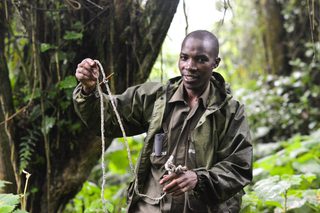
Even as Dian achievements in research and gaining acceptance amongst both the mountain gorillas and recognition from the world were becoming more apparent, she was becoming increasingly aware of the threats the gorillas faced from poachers and cattle herders. Although gorillas were not usually the targets, they became ensnared in traps intended for other animals, causing traumatic injuries and death.
Dian fought both poachers and encroachment by herds of cattle through unorthodox methods: wearing masks to scare poachers, burning snares, spray-painting cattle to discourage herders from bringing them into the forest park, and, on occasion, taking on poachers directly, forcing confrontation.
She called these tactics “active conservation,” convinced that without immediate and decisive action, other long-term conservation goals would be useless as there would eventually be no gorillas or indeed nothing left to save.
Dian’s tactics were not popular among impoverished locals and the park guards were not equipped to enforce the laws protecting the forest and its inhabitants. So, as a last resort, Dian used her own funds to help purchase boots, uniforms, food and supplement their wages to encourage park wardens to enforce anti-poaching laws more actively. These efforts gave rise the first Karisoke anti-poaching patrols, whose job was to protect the gorillas in the research area.
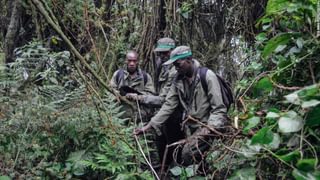
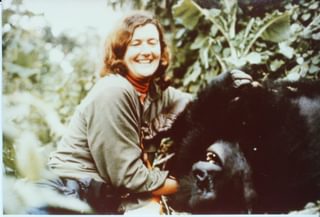
During her years of research, Dian established herself as a true friend of the mountain gorillas, especially with one whom she formed a particularly close bond. Named ‘Digit’ - he was roughly 5 years old when she encountered him in 1967. He had a damaged finger on his right hand (hence, the name) and had no playmates his age in his group. They were drawn together out of curiosity and over time, a true friendship formed.
Tragically, on Dec. 31, 1977, Digit was killed by poachers. He died defending his group, helping them escape to safety. He was stabbed multiple times and his head and hands were severed.
Eventually, there would be more deaths, including that of the dominant silverback ‘Uncle Bert’, and this particular group of gorillas disbanded. This all culminated with Fossey declaring war on the poachers.
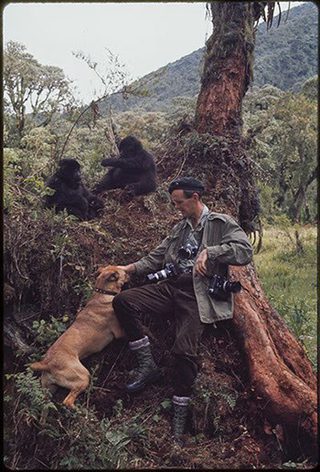
In 1968, the National Geographic Society sent photographer Bob Campbell to photograph Dian’s research. Initially, she saw his presence as an intrusion, but they would eventually become close friends. His photographs of Fossey among the mountain gorillas launched her into instant celebrity, forever changing the image of the gorillas from their King Kong stereotype to a gentle, caring species and drawing attention to their plight. Digit had been part of this famous photo shoot and, as a result, had served as the park’s official mascot, appearing on posters and in publications around the world.
After much internal debate, Dian used his celebrity and his tragic death to gain attention and support for gorilla conservation, establishing the Digit Fund to raise money for her “active conservation” and anti-poaching initiatives. The Digit Fund would later be renamed the Dian Fossey Gorilla Fund International (Fossey Fund).
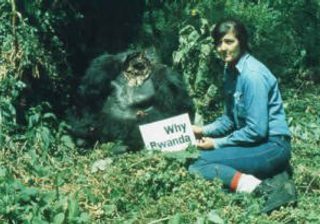
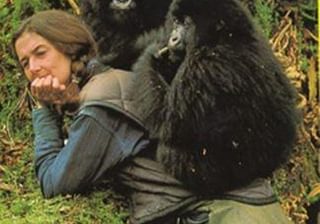
“When you realize the value of all life, you dwell less on what is past and concentrate on the preservation of the future.” — “Gorillas in the Mist”
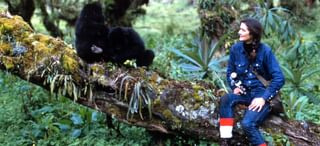
A few weeks before her 54th birthday, Dian was brutally murdered and her body was discovered in her cabin deep in the Rwandan mountains on the morning of Dec. 27, 1985. There was clear evidence of forced entry but no signs that robbery had been the motive.
Theories about Dian Fossey’s murder are varied but have never been fully resolved. She was laid to rest in the graveyard behind her cabin at Karisoke, among her gorilla friends and next to her beloved Digit.
However, her legacy still lives strong today, with her work inspiring a new generation of African conservationists, the gorillas have been given new hope. Today the Dian Fossey Gorilla Fund International continues her work, and tourists can combine a visit to the Karisoke Research centre at Musanze with gorilla tracking.
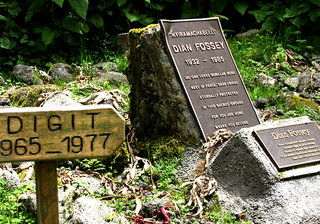
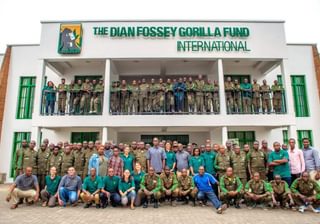
Dian Fossey spent enough time at her research centre in Rwanda to garner a reputation. To the locals she was 'Nyiramachabelli', a Swahili name that when roughly translated means "the woman who lives alone on the mountain."
“Gorillas in the Mist” published in 1983, is the account of her years in the rainforest with the mountain gorillas. Most importantly, it underscores the need for concerted conservation efforts. The book was exceptionally well received and, like the movie of the same name, remains a must-read to this day.
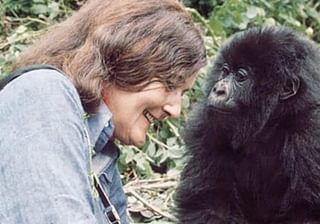
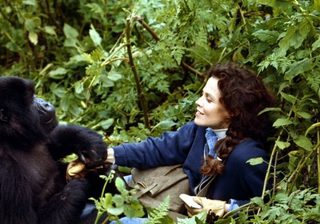
Trekking to see the noble mountain gorillas is unlike any other wildlife experience you will encounter. If you'd like to learn more about travelling to Rwanda and Uganda to trek and see these magnificent animals in their natural habitat, get in touch and we'll make your ultimate gorilla trekking adventure a reality.
Speak with an Africa travel expert

Travel Expert